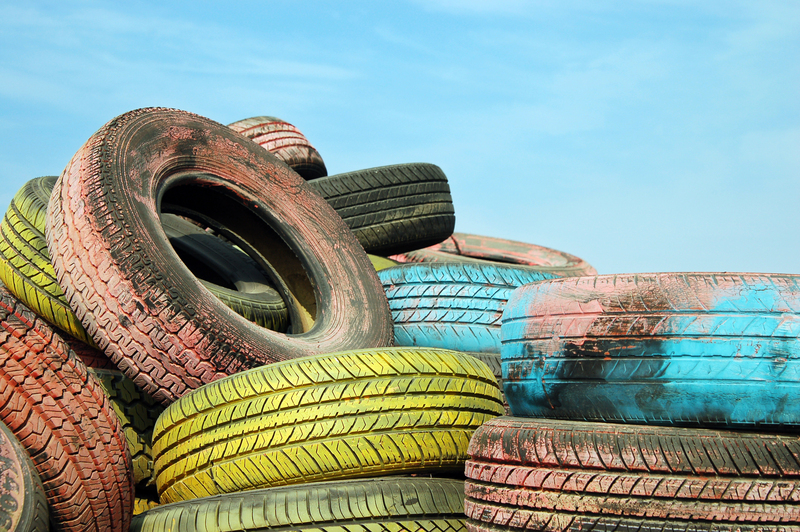Minimizing Environmental Harm Through Safe PPE Waste Disposal
In recent years, the use of Personal Protective Equipment (PPE) has become widespread across the globe due to pandemics, occupational hazards, and increased health consciousness. While PPEs such as masks, gloves, face shields, and gowns play a crucial role in protecting individuals, their massive consumption has led to a surge in waste generation, posing significant environmental threats. This comprehensive guide focuses on minimizing environmental harm through safe PPE waste disposal, offering practical insights, strategies, and best practices to help individuals, communities, and organizations tackle this growing issue responsibly.
Understanding the Environmental Impact of PPE Waste
Personal Protective Equipment, often made from synthetic plastics like polypropylene, is typically designed for single-use purposes to prevent cross-contamination. However, improper disposal of PPE has resulted in:
- *Widespread littering* in cities, public spaces, and natural habitats
- _Marine pollution_ due to masks and gloves finding their way into waterways
- Threats to wildlife health--animals can ingest or become trapped in discarded PPE
- Accumulation of microplastics from decomposing PPE
- Challenges in municipal solid waste management systems
As PPE usage continues, it is vital to create and maintain safe and environmentally sustainable waste disposal systems. The goal is not only to ensure public health but also protect ecosystems from further deterioration.

What Constitutes Safe PPE Waste Disposal?
Safe PPE waste disposal refers to the collection, handling, treatment, and ultimate disposal of used PPE in a manner that minimizes exposure risk to humans and prevents environmental pollution. This process involves:
- Segregating PPE waste from regular trash
- Using *clearly labeled containers* for PPE waste
- Appropriate PPE waste treatment - incineration or advanced recycling where feasible
- Adhering to *local regulations* and public health guidelines
A thorough approach encompassing these steps can *significantly reduce* the negative environmental and health consequences of improper PPE waste disposal.
Major Variations of PPE and Their Waste Challenges
Different types of PPE present unique disposal challenges. Being aware of these variations helps streamline the waste management process:
- Masks and Respirators: Made of layers of synthetic material, these pose a high risk for microplastic pollution and need careful disposal.
Gloves: Latex, nitrile, or vinyl gloves are not biodegradable and should be disposed of separately from general waste streams.- Protective Gowns and Aprons: Often treated with chemicals, these gowns must be handled as hazardous waste in healthcare settings.
- Face Shields and Eye Protection: Harder plastics make recycling more feasible, but collection systems are still limited.
Hazardous vs. Non-hazardous PPE Waste
It's important to recognize which PPE waste constitutes *medical or hazardous waste*. Used PPE in healthcare or quarantine settings is classified as hazardous due to possible contamination. Community PPE waste (from households), if not contaminated, may be managed differently but should still follow safe PPE disposal guidelines to prevent secondary pollution.
Best Practices for Responsible PPE Disposal
Implementing *eco-friendly PPE waste disposal* strategies is critical for minimizing negative environmental effects. Here are some key best practices:
- 1. Educate and Spread Awareness: Inform the public on correct ways to dispose of PPE--use designated bins, avoid littering, and do not flush PPE down toilets.
- 2. Segregate at Source: Encourage the use of separate, clearly marked containers for masks, gloves, and other PPE to avoid cross-contamination and enable specialized treatment.
- 3. Use Color-Coded Bin Systems: Many municipalities recommend red or yellow lidded bins for PPE waste, making identification easier for waste collectors.
- 4. Adhere to Double-Bagging Protocols: For suspected contaminated waste, use double-bagging to minimize rupture risks during handling and transportation.
- 5. Regular Disinfection and Handling Precautions: Ensure that waste handlers use their own protective gear and regularly disinfect collection bins.
PPE Waste Treatment and Disposal Methods
To truly minimize the environmental harm of PPE waste, the treatment and ultimate fate of collected PPE is crucial. Here are widely accepted disposal techniques:
Incineration
Incineration is the primary method for treating medical PPE waste. High temperatures destroy pathogens and reduce waste volume. However, incineration can release harmful emissions if not properly controlled. Using modern, regulated incinerators with pollution control equipment is vital for reducing environmental harm.
Landfilling
Properly lined, engineered landfills can safely contain PPE waste, but overreliance on landfilling leads to plastic accumulation and the risk of microplastic leaching. Ensuring that PPE in landfills is securely bagged is critical for preventing wind dispersion.
Autoclaving and Disinfection
For some types of PPE, autoclaving (steam sterilization) can inactivate pathogens before disposal with general waste. This method, however, is not always suitable for all plastic-based PPE articles, which can deteriorate or release toxins when heated.
Advanced Recycling and Material Recovery
Emerging technologies are making it possible to recycle certain PPE waste, particularly face shields, goggles, and gowns made from single polymer types. Chemical recycling processes, such as pyrolysis, break plastics into reusable monomers or fuels. Supporting research and investing in such solutions is essential for future sustainability.
Government and Corporate Roles in PPE Waste Management
The responsibility for safe PPE waste disposal lies not only with individuals but also with governments, businesses, and NGOs. Key measures include:
- Development and enforcement of clear policies for PPE waste segregation, collection, and treatment
- Setting up dedicated PPE waste collection centers in urban and rural areas
- Promoting innovation in biodegradable PPE and closed-loop recycling programs
- Supporting public education campaigns on *environmentally responsible PPE disposal*
- Fostering partnerships between manufacturers, recyclers, and waste management firms
By creating a regulatory and incentive framework that rewards sustainable PPE waste management, governments and organizations can dramatically reduce the environmental harm caused by PPE.
Innovative Approaches to Reducing PPE Waste Impact
Forward-looking companies and research institutions are already exploring innovative solutions for reducing PPE waste environmental harm:
- Biodegradable PPE - Developing masks and gloves made from plant-based, compostable materials instead of petroleum-derived plastics
- PPE Waste-to-Energy - Converting collected waste to electricity or heat through safe energy recovery processes
- PPE Take-Back Programs - Retailers and healthcare providers set up return points for used PPE that is properly treated or recycled
- Modular Collection Stations - Temporary, mobile bins for events, workplaces, or transport hubs to prevent public littering and ensure correct PPE waste segregation
These approaches require investment and a shift in social behavior but show great promise for lowering the burden of PPE waste on the environment.
Challenges and Barriers to Eco-Friendly PPE Waste Disposal
While solutions are emerging, there are still considerable challenges in minimizing environmental harm from PPE waste:
- Lack of public awareness or motivation to use PPE bins
- Insufficient municipal infrastructure for PPE segregation and processing
- High costs and limited availability of recyclable or compostable PPE alternatives
- Disposal of PPE in regions with inadequate waste management, leading to unregulated open dumping or burning
- Worker safety issues in informal or under-resourced waste handling sectors
Overcoming these obstacles is essential for long-term environmental protection and public health.
The Role of Individuals in Reducing PPE Waste Environmental Impact
Ultimately, individual action plays a fundamental role in safe and responsible disposal of PPE:
- Never litter masks, gloves, or other PPE in public places or nature
- Dispose of used PPE in designated containers and follow local guidelines
- Consider reusing washable, cloth-based PPE where appropriate and safe
- Encourage friends, family, and colleagues to adopt great PPE waste management habits
- Support organizations and brands that invest in sustainable PPE and recycling technologies
Every step taken at the individual level provides cumulative benefits, helping to minimize the ecological footprint of PPE waste.

Looking Forward: A More Sustainable Approach to PPE Waste
The global rise in PPE usage is unlikely to subside soon. Therefore, ensuring safe and environmentally friendly disposal of PPE must become a long-term priority. Investment and innovation in eco-design, circular economy models, and public advocacy will make a critical difference. By adopting best practices in PPE waste management, supporting new technologies, and advocating for sustainable alternatives, we can collectively work towards a healthier, cleaner planet.
Conclusion: Taking Action Today for Tomorrow's Environment
Minimizing environmental harm through safe PPE waste disposal is a shared responsibility requiring concerted action from individuals, organizations, and governmental bodies. By understanding the environmental risks, implementing best practices, supporting innovation, and participating in public education, society can significantly reduce the negative impact of PPE waste. Make a conscious choice today: Handle PPE waste responsibly, dispose of it safely, and help create a sustainable future for generations to come.
